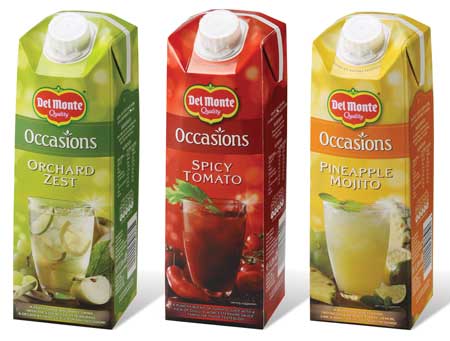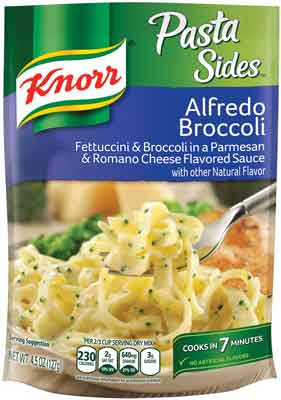Take the Heat off: Minimum Heat Processing & Packaging
PACKAGING
While the processing-phobes continue the volume and frequency of their ill-informed public diatribes, food and food-packaging scientists and technologists try to calm the storms by continuing to preserve and protect the food supply with reduced energy inputs. The resulting food products, which will continue to be consumed by the complainers, will be noteworthy for their safety and paucity of adverse secondary effects.
Nicolas Appert’s observations and implementation of heat to control spoilage in closed containers was certainly a definitive milestone. But it was not until the work of Samuel Prescott and William Underwood in the 19th century that comprehension of the nature of thermal energy to control the major vectors of spoilage emerged. Some 40 years after that, the notions of sterilization and cook values emerged to suggest that quantities of heat could be altered to minimize cooking while still achieving preservation. This month’s column illustrates the drive toward minimizing the heat employed to preserve food products. It has long been an accepted fact that, regardless of the benefits, the application of heat alters food products, often adversely, and that is the problem: How can food manufacturers preserve food without using too much heat?
Many preservation methods of the 20th century involved judiciously applying heat with varying success. But the 21st century has ushered in recognition of the inevitable fusion of food product with processing. Processing is an indispensable element of distributing food and feeding the planet. Packaging is not a separate entity; it is an integral component of a holistic food delivery system. The use of heat to accomplish a defined result (i.e., the elimination of pathogens) must be specific to ensure that preserved food products maintain their original fresh-like qualities for as long as possible. A number of technologies have been developed that minimize thermal inputs to improve product sensory quality, ensure safety, and permit universal enjoyment of food: Among these technologies are aseptic processing and packaging, hurdle technology, controlled environment packaging, microwave-assisted heating, clean-room technology, and ultrahigh pressure processing.
 Aseptic Processing and Packaging
Aseptic Processing and Packaging
Aseptic processing and packaging enjoy an increasingly significant role in today’s food system; they are used to preserve beverages, dairy products, wine, sauces, soups and, in some extreme circumstances, solid particulates. One rationale for aseptic processing is heating prior to packaging, thus enabling processors to apply necessary pasteurization or sterilization energy to fluids in thin films or in highly agitated fluid products. Thermodynamically, thin films permit very high temperature heat sources to conduct and/or convect thermal energy very rapidly into products. As students of thermodynamics know well, the faster heat is transmitted into a product, the less total energy is required to attain the kill temperature for micro organisms or enzymes that cause food deterioration. In addition, the faster the heating, the less cooking and subsequent thermal damage to a food product occur.
Although aseptic processing is more than 80 years old, only in the past 30 years has it been applied for particulate food products. In conventional high temperature short-time or ultra-high temperature short-time heating, exposure times are so short that energy cannot realistically pass into finite dimension particles such as vegetables, seafood, or meat. When particulate motion is retarded, heat can penetrate particulate pieces sufficiently to effect preservation. Scraped surface heat exchangers and their ilk can achieve the requisite energy transfer that is now approved by regulatory officials.
Not quite aseptic but close enough that some would classify it as such are the systems applied in some Asian countries for preserving cooked rice in barrier plastic trays. Rice is exposed to sufficient heat to preserve it and transferred into trays that are hermetically sealed. Other processes aimed at reducing heat damage to food products are essentially aseptic. For example, ohmic heating, in which the food product is an electrical resistance, must be aseptically linked in process and packaging. Microwave-assisted thermal processing made its commercial debut with sweet potato puree in institutional-sized barrier pouches, which is aseptically linked to the packaging operations. Reduced temperature/time hot-fill protocols for high-acid fluid foods are also a form of reduced heat processing.
--- PAGE BREAK ---
Microwave-Assisted Thermal Sterilization
Washington State University’s Microwave- Assisted Thermal Sterilization (MATS™) system integrates steam and microwave functionalities to achieve rapid thermal sterilization. Food products are packaged in hermetically sealed flat barrier plastic trays, which offer high surface to volume ratios that accelerate the conduction of heat into the food contents. The sealed packages are moved through continuously flowing hot water under pressure that increases the temperature differential between the package exterior and the food product interior. Microwave energy is simultaneously applied directly to the body of the food product to significantly increase the temperature of the contents. Pressure is maintained during the cooling cycles, which are longer than heating because there is no such thermodynamic as microwave cooling. Total times for achieving sterility (inclusive of cooling) with MATS™ for food product solids is often less than 10 minutes. By reducing the retort times so drastically, heat damage is radically reduced over long-time canning processes, and the energy costs are dramatically decreased (an economic and environmental benefit).
Several European commercial implementations are applying analogous techniques in their quest to reduce heat inputs while achieving sterility or extended chilled shelf life. Barrier plastic trays of precooked foods are distributed under chilled conditions for up to seven weeks. This means that the product contents have been pasteurized and not sterilized.
 Retort Heat Reduction
Retort Heat Reduction
The differences between static and agitating retorts in terms of time and energy usage is dramatic: some claim up to 90% reduction, but more realistically there is a 20% to 80% drop in the amount of heat. Food and food-packaging technologists are familiar with the time decreases evidenced in rotating cans on their vertical axes (or horizontal if the cans are retorted in a hydrostatic retort). End-over-end agitation offers significant increases in heat transfer over static retorts for contents in liquid. Internal bubble tumbling accelerates convective heat transfer. Allpax (www.allpax.com) has been demonstrating 20% to 60% time and energy reductions in two of its newer systems: Shaka is a reciprocating (i.e., back and forth) gentle motion retort that has been used for food products such as soups, pasta in sauce, hummus, and guacamole. Canned beef stew can be sterilized in a Shaka machine in 48 minutes compared to 82 minutes for a static retort. Reciprocating retorting is also applicable for retort pouches, for which retort protocol is already reduced because of the high surface-to-volume ratio of the package as compared to a cylindrical metal can.
Another system that markedly reduces the thermal input is a horizontal rocking action. The product packaged in a can or flat pouch is placed horizontally on a rack, which is inserted into the retort. The action involves a 10- to 20-degree back and forth rocking that agitates the liquid plus solid contents sufficiently to reduce heating by as much as 80%.
Pressure-Assisted Thermal Sterilization
The current activity in ultra-high pressure treatment of packaged food products is yielding a host of food products in commercial distribution, especially fresh squeezed juices and analogous beverages. The application of pressure allows a major reduction in microbiological load, resulting in pasteurization. A seven-week chilled shelf life is a significant accomplishment but not good enough for low-acid beverages and food products for ambient temperature shelf life (although chilled distribution offers better sensory quality retention than ambient temperature distribution). By complementing the pressure with a relatively small amount of heat, low-acid food products such as mashed potatoes may be sterilized for ambient temperature distribution.
MATS™, pressure-assisted thermal sterilization, and other processing and packaging methods are linking several different food preservation technologies in small doses. The issue of deterioration during distribution remains because a higher quality product enters the stream, so chilling should be a preferred distribution technology.
The basic notion of a single preservation technology delivering the requisite preservation effect will soon be passé, yielding to combination technologies that offer better sensory quality retention in a safer product. Food processing can be optimized to present a holistic and safe food supply to consumers.
 Aaron L. Brody, Ph.D., CFS, Contributing Editor
Aaron L. Brody, Ph.D., CFS, Contributing Editor
President and CEO, Packaging/Brody Inc., Duluth, Ga.,
and Adjunct Professor, University of Georgia
[email protected]
